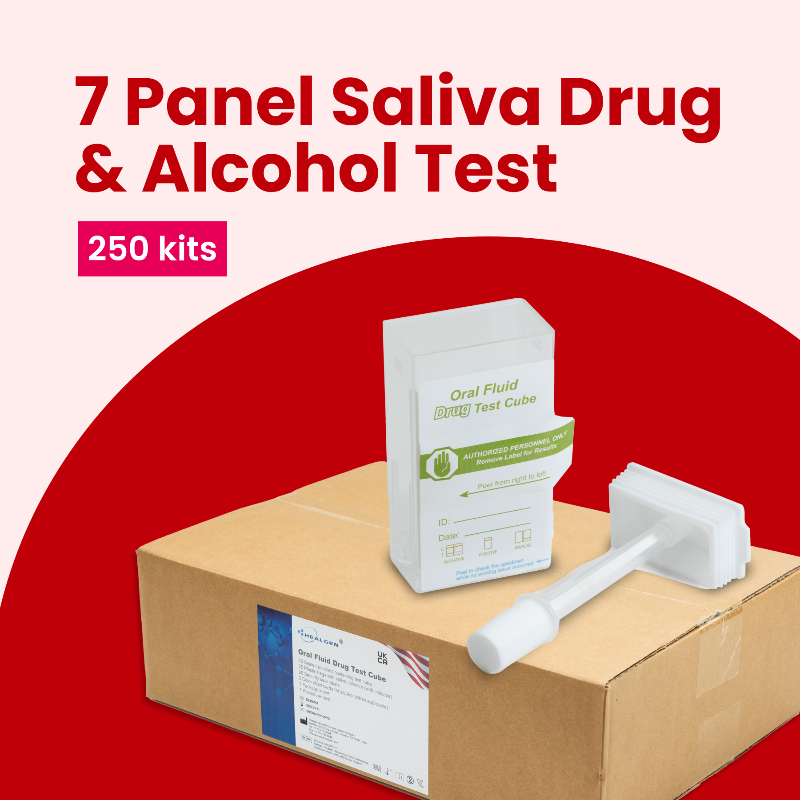Understanding Your Drug Test Results - A Simple to Read Guide
It has become commonplace in a variety of locations, including workplaces, hospitals, rehabilitation centres, and even in the legal system. It is used to determine whether or not a person has used a drug or alcohol. Since the result can impact employment, healthcare, or legal matters, it is important to understand how to read the results correctly.
We offer CE-marked and MHRA-approved urine and saliva drug test kits with 95-99% accuracy and next-day UK delivery, and in this guide, we will clearly explain how to read your results and the meaning of the abbreviations on the kit.
How to Interpret Drug Test Results
Regardless of whether you use a urine, saliva, blood, or hair test, results are usually shown in three forms:
Positive Result
- A positive result means the drug is present in your body above the permissible limit.
- On test strips: Control line (C) appears, but Test line (T) does not.
- For confirmation, a GC-MS or LC-MS/MS lab test may be carried out to ensure no false positives occur.
Negative Result
- A negative result means no drugs were detected or the concentration is below the cut-off level.
- On the strip: Both Control (C) and Test (T) lines appear.
- Usually indicates that the individual has not used drugs recently.
Invalid Result
An invalid result indicates that the test failed. This may occur if:
- The test failed and must be repeated.
- Happens when:
No lines appear, or
Control line (C) is missing.
- In this case, use a new sample and kit.
You will need to repeat the test on a new sample and test kit in this situation.
What Do Drug Abbreviations Mean?
Most multi-panel kits use short drug codes. Here are some common ones:
- AMP – Amphetamines (Adderall, meth)
- BZO – Benzodiazepines (Xanax, Valium)
- COC – Cocaine
- THC – Cannabis / Marijuana
- OPI – Opiates (morphine, codeine)
- PCP – Phencyclidine
- MDMA – Ecstasy
- METH – Methamphetamine
- OXY – Oxycodone
- FEN – Fentanyl
- ETG – Alcohol metabolite
- KET – Ketamine
- LSD – Acid (hallucinogen)(Tip: Always check your kit’s instruction sheet for the full abbreviation list.)
(Tip: Always check your kit’s instruction sheet for the full abbreviation list.)
Can Drug Tests Be Wrong?
Yes, false results are possible. Common issues include:
- Some medications (like cold medicine or antibiotics) can cause a false reading. A confirmation lab test removes doubt.
- Attempts to cheat tests (dilution, sample switching, adding chemicals). Professional labs check for temperature, pH, and integrity markers.
Preparing for a Drug Test (UK Workplace or Home)
Before Your Test
- Follow all instructions carefully.
- Avoid foods or medicines that can affect results.
- Drink water, but not excessively.
- Inform the tester if you are taking prescribed medication.
During the Test
- Remain calm and follow directions.
- Provide a clean and adequate sample (urine or saliva).
- Do not attempt to tamper with the test.
After the Test
- Results may take a few minutes (instant kits) or days (lab kits).
- Read the report carefully.
- For positives, confirm if required by your employer or healthcare provider.
FAQ – Drug Test Results in the UK
Q: How accurate are home drug test kits in the UK?
Ans: Most CE-marked urine and saliva kits are 95–99% accurate when used correctly.
Q: What does a faint line mean on a drug test?
Ans: A faint line in the Test (T) area still counts as a negative result.
Q: How long do drugs stay detectable?
- Cannabis (urine) → up to 28 days
- Cocaine → 2–4 days
- Amphetamines → 2–3 days
(Detection windows vary by test type and individual.)
Q: Can I buy drug test kits online in the UK?
Ans: Yes, you can buy these kits online at drugtestingkit.uk with fast, discreet UK delivery.
Order Reliable Testing Kits in the UK
Understanding drug test results doesn’t have to be complicated. With our accurate, UK-approved test kits, you can check results confidently at home, in the workplace, or in clinical settings.
Collections
-

Breathalyser Alcohol Tester
Looking for a reliable breathalyser alcohol tester in the UK? We offer...
-

Buy Workplace Alcohol Testing Kit In UK
We have an extensive selection of workplace alcohol and drug solutions, including...



